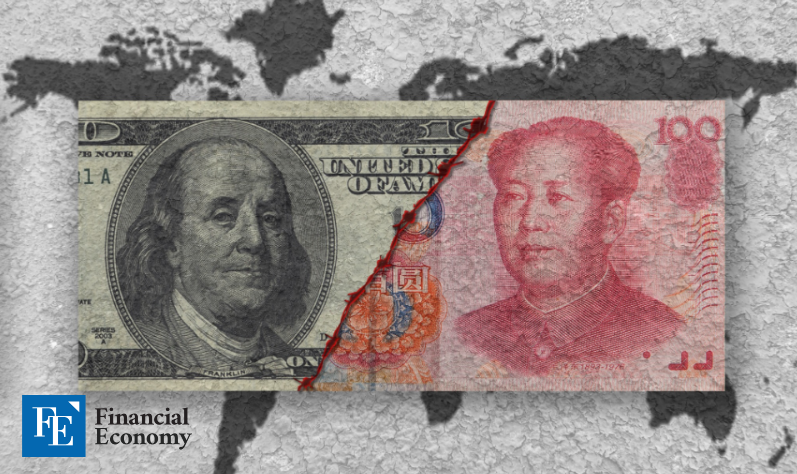China Pushes Yuan-Backed Stablecoin Roadmap to Counter Dollar Monopoly
Input
Modified
Recognition That CBDCs Alone Have Limits
Concerns Over Dollar Dominance
Fragile Trust Base Restricts Growth Potential

China is accelerating its yuan internationalization strategy by exploring the introduction of a yuan-backed stablecoin. With roughly 90 percent of global stablecoin transactions pegged to the U.S. dollar, Beijing appears to be responding to fears that the current trajectory could sideline its efforts to expand the yuan’s role on the global stage. While potential benefits such as broader yuan-based settlement networks and stronger financial sovereignty are being touted, key challenges remain: closing the gap with dollar-dominated tokens, building credibility, and establishing a robust regulatory framework.
Expanding Networks Through Stablecoin Adoption
Reuters reported on the 20th, citing multiple sources, that Chinese leadership is internally discussing the possible issuance of a yuan-pegged stablecoin. As early as the end of this month, Beijing plans to hold a State Council-led research session focusing on yuan internationalization and stablecoins. The roadmap is expected to outline China’s response to the U.S. push for stablecoins, targets for expanding global yuan usage, the roles and responsibilities of domestic regulators, and guidelines for risk management.
Until now, China has relied heavily on its central bank digital currency (CBDC) in its financial digitalization strategy. But most assessments agree that the CBDC alone has clear limitations when it comes to yuan internationalization. While its issuance by the central bank ensures a certain level of trust, its scope of use remains limited in cross-border payments and private-sector transactions. Stablecoins, by contrast, can expand quickly through private-sector participation and listings on global exchanges, creating broad transaction networks at a rapid pace.
Beijing hopes that a yuan-backed stablecoin will accelerate the currency’s global use. With widespread skepticism that initiatives such as cross-border settlement systems or increased gold reserves alone can rival the dollar, officials believe that a yuan-pegged stablecoin could offer more flexible tools for investment and payments abroad. This, they argue, would simultaneously strengthen trust in the yuan and elevate its standing as an international asset.

A Direct Challenge to Dollar Dominance
The cryptocurrency market has seen dramatic swings in recent years. The price of Bitcoin, the flagship digital asset, hit $120,000 in July, while its market capitalization of $2.3 trillion long ago surpassed that of Meta ($1.7 trillion) and Tesla ($1 trillion). The stablecoin market has grown in parallel, surpassing a $230 billion market cap by late May, an increase of more than 50 percent in a single year. At the core of this surge lies a shifting perception of dollar dominance.
To sustain its role as the world’s reserve currency, the dollar must circulate globally. But that structure also makes U.S. trade deficits inevitable. To cover those deficits, the Treasury issues bonds. With major buyers such as China and the BRICS nations (Brazil, Russia, India, China, and South Africa) slashing their purchases, U.S. Treasury yields have climbed. This has driven U.S. interest costs sharply higher, with annual deficits ballooning to around $2 trillion.
The Trump administration turned to stablecoins as a lifeline. The more dollar-pegged stablecoins circulate globally, the greater the demand for U.S. Treasuries, reinforcing dollar hegemony. Roughly 90 percent of the stablecoins in circulation are dollar-linked, and most are backed by Treasuries. Tether (USDT), the leading dollar stablecoin, alone holds around $100 billion in U.S. Treasuries, more than Germany ($88 billion) or Mexico ($95.8 billion).
The reasons behind China’s countermove are clear. If dollar-linked stablecoins solidify their place as the de facto standard in digital assets, the yuan risks losing competitiveness in international trade. Moreover, Beijing’s long-running strategy of amassing large quantities of gold to counter dollar dominance would lose relevance in the digital era. By linking the yuan to a new international settlement network through stablecoins, China’s strategy goes beyond mere digitalization of its currency—it is a long-term attempt to undercut the dollar’s monopoly.
Latecomer Disadvantage and the Crucial Role of Trust
Still, China faces considerable hurdles in making its stablecoin vision a reality. The most pressing challenge will be establishing market trust. For a stablecoin to function properly, its foundation—collateral assets, regulatory systems, and transaction networks—must be solid. Unlike the dollar, the yuan lacks a large-scale market, and a stable revenue model has yet to be developed. With limited interest income generated from collateral assets, building both trust and circulation volume will be a tall order.
Stability itself is another issue. Experts repeatedly stress that stablecoins must not be mistaken for “safe assets that replace sovereign currencies.” Even if issuers hold 100 percent reserves, they lack government guarantees or deposit insurance. This structural weakness means that if collateral values fall or issuers face insolvency, holders are not guaranteed cash redemption. A prime example is the 2023 collapse of Silicon Valley Bank, which caused USD Coin (USDC) to lose its peg and fall below $1.
Regulatory frameworks are also still in their infancy. For years, Chinese authorities went so far as to ban ideological discussions around digital assets. Only recently have they scrambled to pivot strategy, underscoring the mountain of work ahead. They must define issuer qualifications, reserve management standards, and user protections—tasks that remain largely unaddressed. With the market already deeply entrenched around the dollar, China’s late entry and slow pace of institutionalization could magnify its disadvantages. Ultimately, the success or failure of Beijing’s yuan internationalization strategy will hinge on how swiftly and decisively it builds a credible regulatory foundation.





















